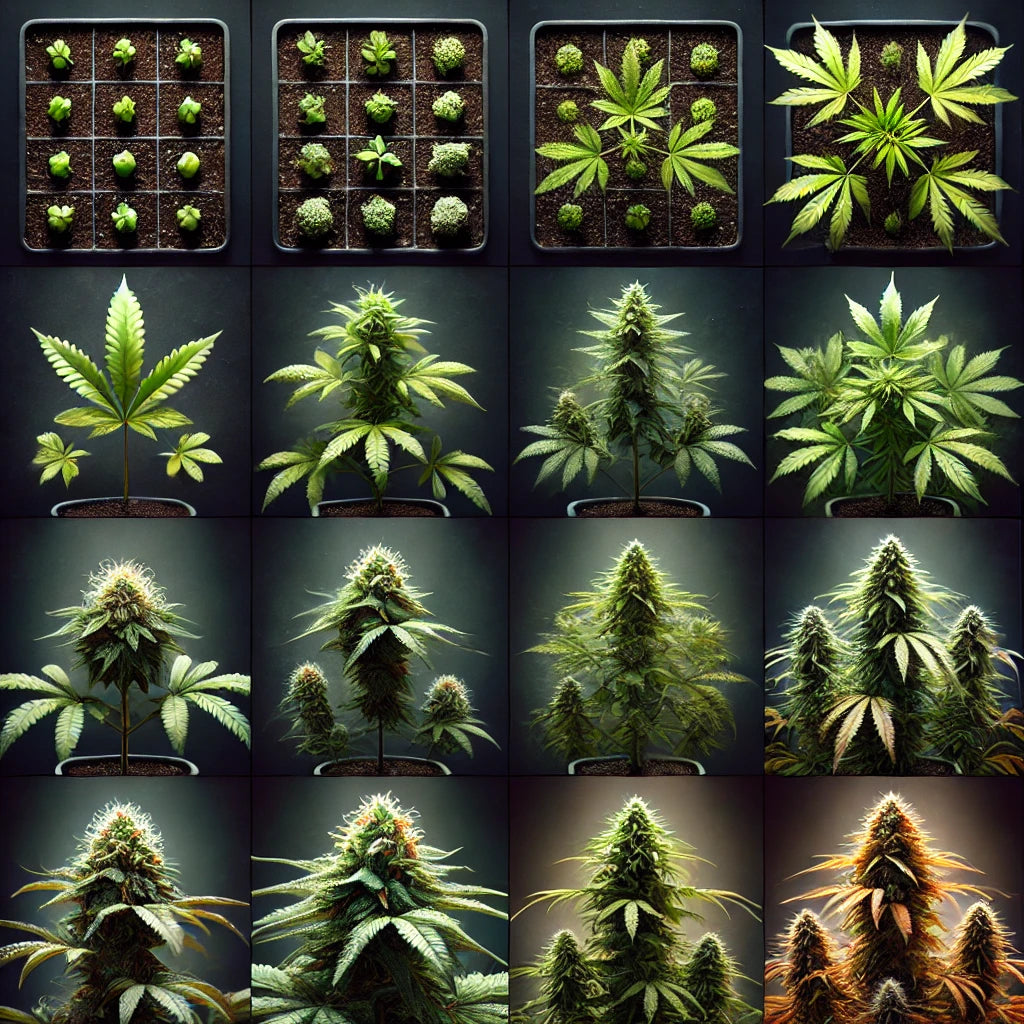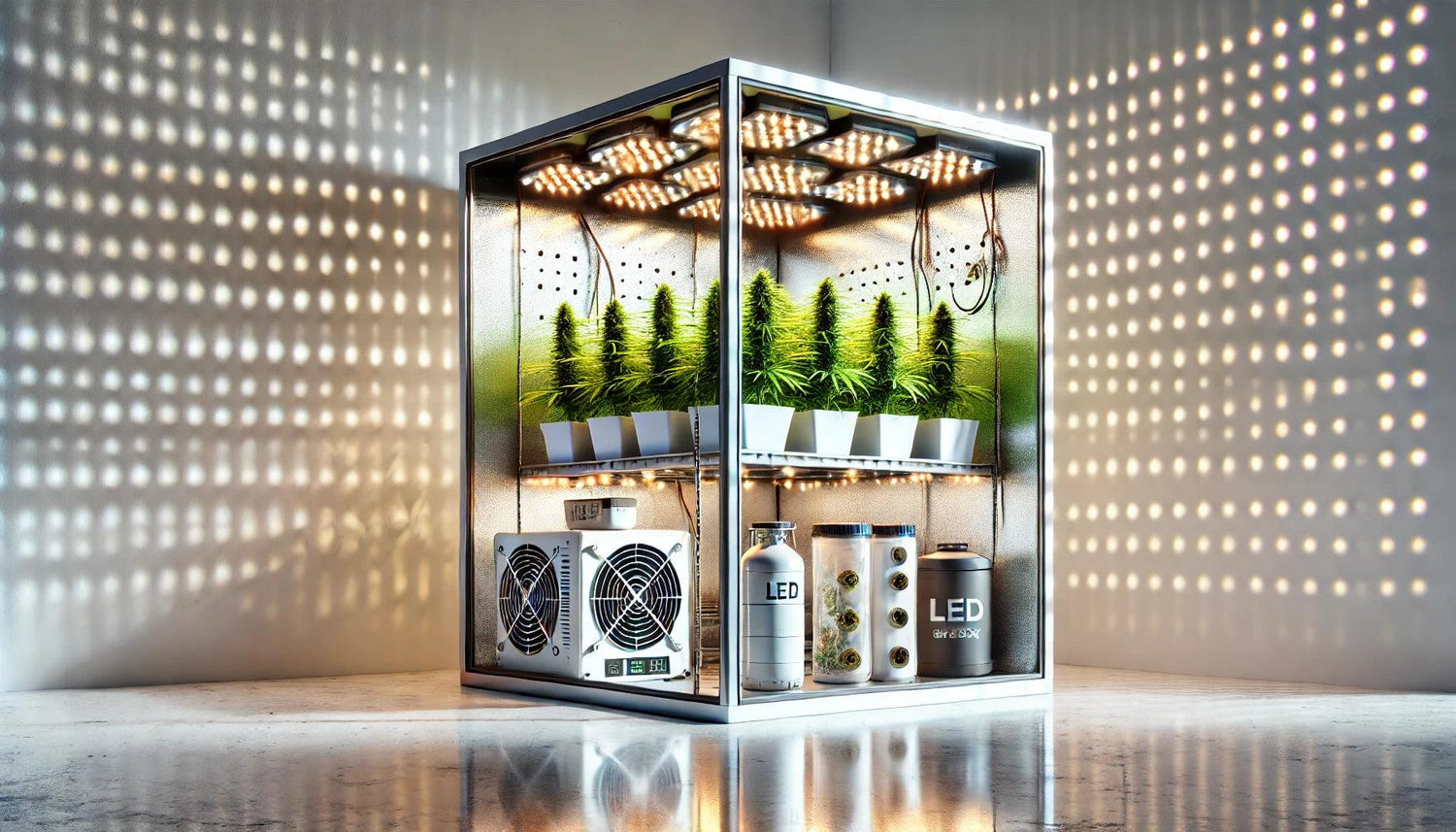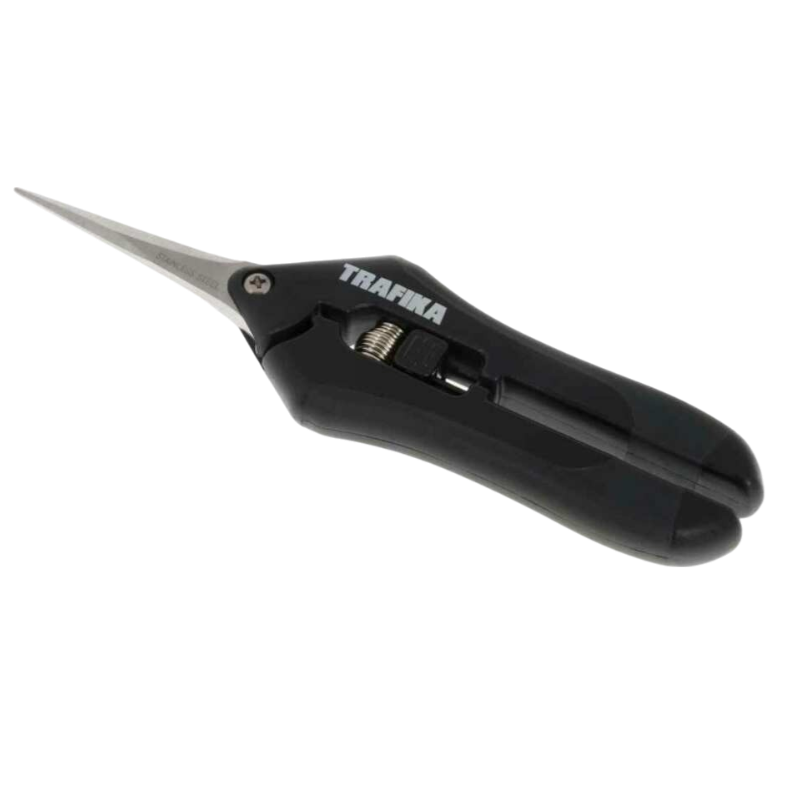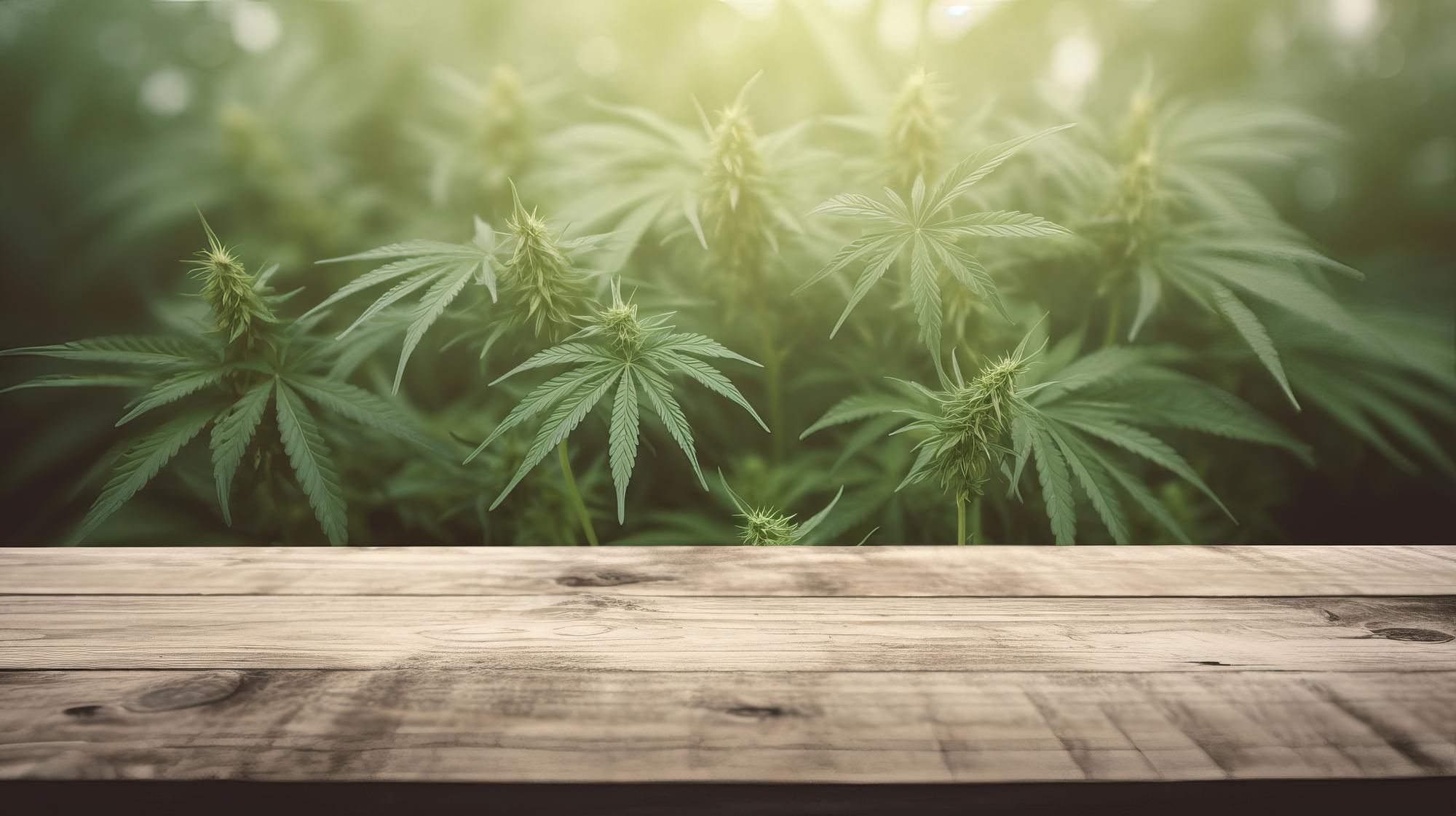Choosing the perfect grow box: size, material and features
Choosing the right grow tent is crucial to your success when growing cannabis indoors. A well-thought-out decision can not only save you time and money, but also maximize your yield. Let's take a closer look at the most important factors.
Size: How much space do you really need?
The size of your grow box depends on several factors. First of all, you need to consider how many plants you want to grow. A good rule of thumb is to plan around 30x30 cm of floor space per plant. Also consider the height: cannabis plants can grow between 60 cm and 2 m tall, depending on the variety and cultivation method. Also plan space for lighting and ventilation.
Popular grow box sizes are:
- 60x60x160 cm (suitable for 1-2 plants)
- 80x80x180 cm (ideal for 2-4 plants)
- 120x120x200 cm (perfect for 4-6 plants)
Material: What you should pay attention to
The material of your grow box plays an important role in durability, opacity and heat insulation. Most high-quality grow boxes consist of a sturdy metal frame with an outer shell made of coated nylon or mylar. These materials reflect the light optimally and ensure that your plants are evenly illuminated.
Equipment: These features make the difference
A good grow box should be more than just a dark box. Look for the following features:
| feature | To use |
|---|---|
| Reflective inner coating | Maximizes light output |
| Ventilation openings | Allow good air circulation |
| Cable openings | For clean cable management |
| Waterproof floor | Protects against water damage |
Also keep in mind that you may need to fit additional equipment such as fans, filters or hygrometers in your grow box. A box with versatile mounting options can be very useful here.
With the right grow box you lay the foundation for a successful harvest. Take the time to compare different models and choose a box that meets your specific requirements. Your plants will thank you!
Creating an optimal climate: temperature, humidity and ventilation
The right climate in your cannabis grow tent is the key to healthy, strong plants and a bountiful harvest. Let's take a closer look at the three most important factors: temperature, humidity and ventilation.
Temperature: Finding the golden mean
Cannabis plants thrive best in temperatures between 20°C and 28°C. During the day, when the lights are on, you should aim for a temperature of around 25°C. At night, when the lights are off, the temperature can drop to around 18-20°C. This slight temperature fluctuation mimics natural conditions and promotes plant growth.
Note: Temperatures that are too high can stress your plants and slow down growth. Temperatures that are too low can inhibit root growth and impair nutrient uptake.
Humidity: The right moisture content in every growth phase
The optimal humidity varies depending on the growth phase of your cannabis plants:
| Growth phase | Optimal humidity |
|---|---|
| Germination and seedlings | 70-80% |
| Vegetative phase | 50-70% |
| Flowering phase | 40-50% |
| Last weeks before harvest | 30-40% |
Too high humidity in the late flowering phase can lead to mold growth, while too low humidity in the early stages can slow growth.
Ventilation: Fresh air for your plants
Good ventilation is essential for healthy cannabis plants. It ensures a constant exchange of air, regulates the temperature and prevents the formation of mold. Here are some tips for optimal ventilation:
- Install an exhaust fan at the top of your grow box to remove warm air.
- Attach an air supply fan to the bottom to introduce fresh, CO2-rich air.
- Use an oscillating fan inside the box to move the air and strengthen the stems of your plants.
- Make sure that you exchange the entire air volume of your grow box every 1-3 minutes.
Good air circulation also helps to minimize the characteristic cannabis smell. If you are growing in an odor-sensitive environment, consider installing an activated carbon filter.
Climate control: your path to success
To optimally control the climate in your grow box, we recommend using measuring devices and control units:
- Thermo-hygrometer for monitoring temperature and humidity
- Digital climate controllers for automatic control of fans and humidifiers
- Timers to regulate lighting times
With the right combination of temperature, humidity and ventilation, you can create the perfect conditions for your cannabis plants. Watch your plants closely and adjust the settings if necessary. With a little practice and patience, you will soon be a master at managing the climate in your grow box!
Mastering lighting concepts: LED vs. HPS - Which lighting delivers top yields?
The right lighting is crucial to the success of your indoor cannabis cultivation. It not only affects growth and flowering, but also the quality and quantity of your harvest. Let's take a closer look at the two most popular lighting options: LED and HPS.
LED lighting: The modern solution
LED lights have made tremendous progress in recent years and have become a popular choice for cannabis growers.
Advantages of LED lighting:
- Energy efficiency: LEDs consume less power and generate less heat
- Long lifespan: Quality LEDs can last up to 50,000 hours
- Spectrum adjustment: Many LED lamps offer adjustable light spectra for different growth phases
- Lower heat generation: Reduces the need for additional cooling
Disadvantages of LED lighting:
- Higher initial costs: Quality LED lamps are usually more expensive than HPS systems
- More complex setup: Optimal positioning and adjustment can be challenging at first
HPS lighting: The proven classic
HPS (High Pressure Sodium) lamps have been in use for decades and have proven to be a reliable light source for cannabis cultivation.
Benefits of HPS lighting:
- Proven technology: decades of experience and proven results
- High light intensity: Delivers deep light penetration into the plant crowns
- Lower acquisition costs: HPS systems are often cheaper than high-quality LED setups
Disadvantages of HPS lighting:
- High energy consumption: HPS lamps require more power than LEDs
- Strong heat generation: often requires additional cooling measures
- Shorter lifespan: HPS lamps need to be replaced more often than LEDs
Comparison: LED vs. HPS
| criterion | LED | HPS |
|---|---|---|
| Energy efficiency | High | Low |
| Heat development | Small amount | High |
| Acquisition costs | High | Low |
| life | Long (30,000-50,000 hours) | Shorter (10,000-20,000 hours) |
| Spectrum adjustment | Flexible | Limited |
Making the right choice
The decision between LED and HPS depends on several factors:
- Budget: If you plan for the long term, the higher initial cost of LEDs can be offset by energy savings.
- Room size: In smaller rooms or with limited ceiling height, LEDs can be advantageous due to their lower heat generation.
- Experience: Beginners often find HPS systems easier to handle, while experienced growers appreciate the flexibility of LEDs.
- Yield Goals: Both systems can produce excellent yields when used correctly.
Regardless of your choice, it's important to match the lighting intensity to the size of your grow tent. As a rule of thumb, aim for around 50-80 watts per square foot, depending on the efficiency of your lights.
Ultimately, there is no universally "best" solution. Both LED and HPS can produce excellent results. The most important thing is to familiarize yourself with your chosen system and learn how to use it optimally. With the right care and attention, you will soon be proud of your magnificent cannabis harvest!
Nutrients and substrates: The key to healthy cannabis plants
The right nutrients and substrate are fundamental to the growth and health of your cannabis plants. In this section, you will learn how to provide your plants with the optimal food and environment for their roots.
Essential nutrients for cannabis
Cannabis requires a variety of nutrients that can be divided into three categories:
- Primary nutrients (macronutrients): nitrogen (N), phosphorus (P), potassium (K)
- Secondary nutrients: Calcium (Ca), Magnesium (Mg), Sulphur (S)
- Micronutrients: Iron (Fe), Manganese (Mn), Boron (B), Zinc (Zn), Copper (Cu), Molybdenum (Mo)
Nutrient needs vary depending on the growth phase:
| Growth phase | Primary nutrient requirements |
|---|---|
| Vegetative phase | High nitrogen requirement (N) |
| Flowering phase | Increased need for phosphorus (P) and potassium (K) |
Fertilizer: Organic vs. Mineral
When choosing fertilizer, you have two main options:
Organic fertilizer:
- Advantages: Gentle on the plant, improves soil structure, promotes microorganisms
- Disadvantages: Slower nutrient release, less precise dosing
Mineral fertilizer:
- Advantages: Fast nutrient availability, precise dosing possible
- Disadvantages: Risk of over-fertilization, can affect soil life
For beginners, a combination of both fertilization methods is often recommended in order to take advantage of the benefits of both worlds.
Substrates: The basis for healthy growth
The right substrate will provide support for your cannabis plants and support optimal nutrient and water supply. Here are some popular options:
Earth
A classic and beginner-friendly choice. Look for high-quality, pre-fertilized cannabis soil with good drainage.
coconut
A versatile medium made from coconut fiber. It offers excellent water retention and aeration but requires regular fertilization.
Rock wool
An inert medium that allows full control over nutrient supply. Ideal for experienced growers and hydroponic systems.
Perlite and vermiculite
Often used as additives to improve drainage and aeration.
pH and EC: The keys to nutrient absorption
The pH of your substrate and nutrient solution is crucial for nutrient uptake. For cannabis grown in soil, the pH should be between 6.0 and 7.0, and in hydroponic systems, between 5.5 and 6.5.
The EC value (electrical conductivity) provides information about the concentration of dissolved nutrients. For cannabis, it should be between 0.8 and 2.0 mS/cm, depending on the growth phase.
Tips for optimal nutrient supply
- Start with a small amount of fertilizer and increase it slowly
- Watch your plants closely for signs of over- or under-supply
- Rinse your substrate regularly to avoid salt deposits
- Use high quality water, ideally filtered or distilled water
- Adjust your nutrient supply to the respective growth phase
With the right substrate and a balanced supply of nutrients, you lay the foundation for healthy, strong cannabis plants. Experiment carefully and learn to "read" your plants' needs. Over time, you will develop a feel for what your plants need to thrive and deliver top-notch yields.
Troubleshooting: Common problems and their solutions for beginners and professionals
Even experienced cannabis growers encounter challenges from time to time. In this section, we'll cover some of the most common problems with indoor growing and show you how to solve them effectively.
Nutrient deficiencies and overfertilization
Nutrient problems are one of the most common challenges in growing cannabis.
Signs of nutrient deficiencies:
- Discoloration of the leaves (yellowing, browning)
- Stunted growth
- Death of leaf edges
Signs of over-fertilization:
- Burnt leaf tips
- Dark green, claw-shaped leaves
- Slower growth
Solution: Check the pH of your substrate and nutrient solution. Adjust your fertilizer dosage and use special corrective solutions for nutrient deficiencies if necessary.
Pests and diseases
Indoor grow boxes are not immune to pests and diseases.
Common pests:
- Spider mites
- Thrips
- Aphids
Common diseases:
- mildew
- Botrytis (grey mould)
- Fusarium (wilt)
Solution: Keep your grow box clean and monitor your plants regularly. At the first signs of pests or diseases, resort to biological control or, as a last resort, chemical pesticides.
Temperature and humidity problems
Unbalanced climatic conditions can lead to various problems:
| problem | Possible cause | Solution |
|---|---|---|
| Wilted leaves | Temperature too high | Improve ventilation, use cooling systems |
| Slow growth | Temperature too low | Increase the temperature, insulate the grow box better |
| Mold formation | Too high humidity | Improve air circulation, use dehumidifiers |
Lighting problems
Inadequate or incorrect lighting can lead to various problems:
- Long, thin stems (stretching growth): Often a sign of too little light
- Burnt leaves: May indicate too intense light or too close to the light source
- Irregular growth: Possibly uneven light distribution
Solution: Adjust the light intensity and the distance between plants and the light source. Use reflectors for a more even light distribution.
pH problems
An incorrect pH value can significantly impair nutrient absorption.
Solution: Check the pH of your substrate and nutrient solution regularly. Use pH regulators to keep the value in the optimal range (6.0-7.0 for soil, 5.5-6.5 for hydro).
General troubleshooting tips
- Watch closely: Daily inspections help identify problems early.
- Document: Keep a grow journal to identify patterns and successful solutions.
- Act quickly but carefully: Quick reactions are important, but hasty actions can do more harm than good.
- Learn from mistakes: Every problem is an opportunity to improve your growing skills.
- Exchange ideas: Use online forums and grow communities to benefit from the experiences of others.
Remember: problems are normal and part of the learning process. Over time, you will get better at recognizing signs early and responding effectively. Stay patient and willing to learn, and you will soon be a master at troubleshooting your cannabis grow box!

















